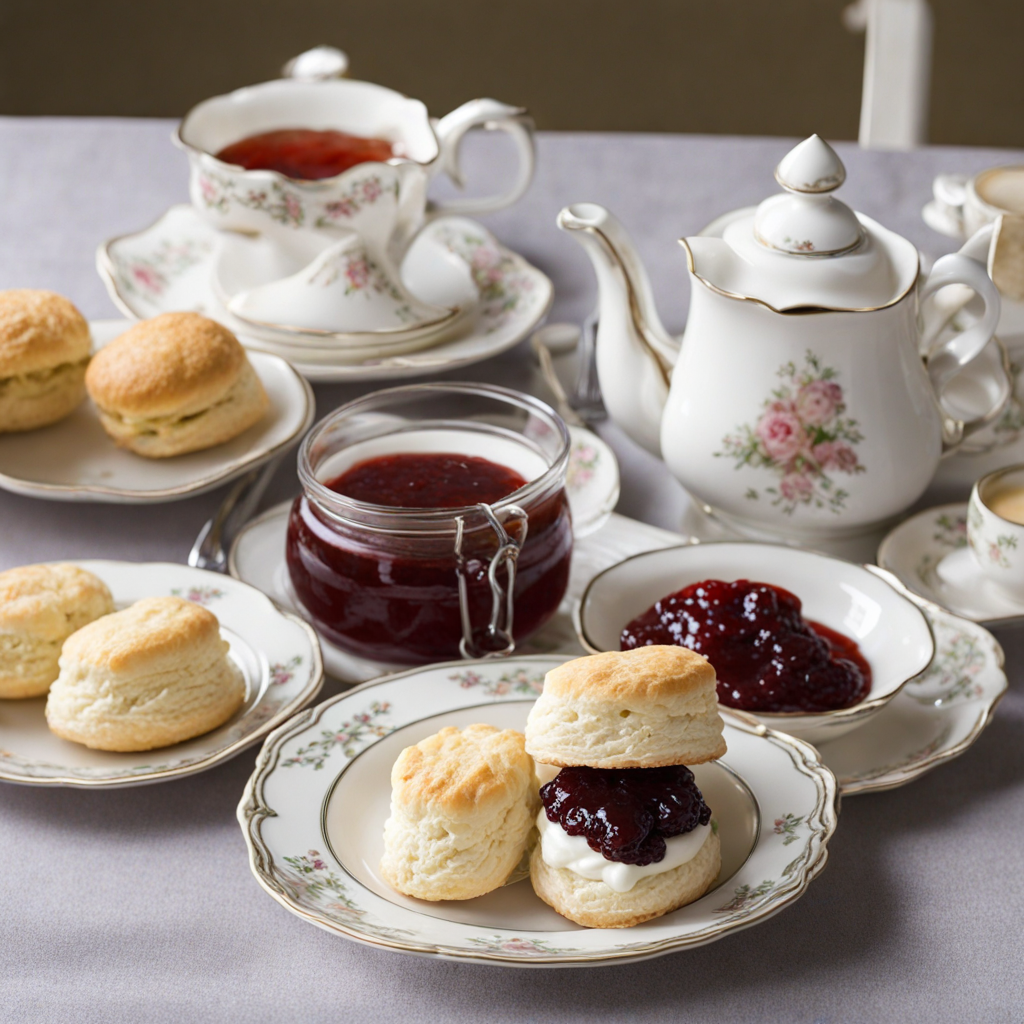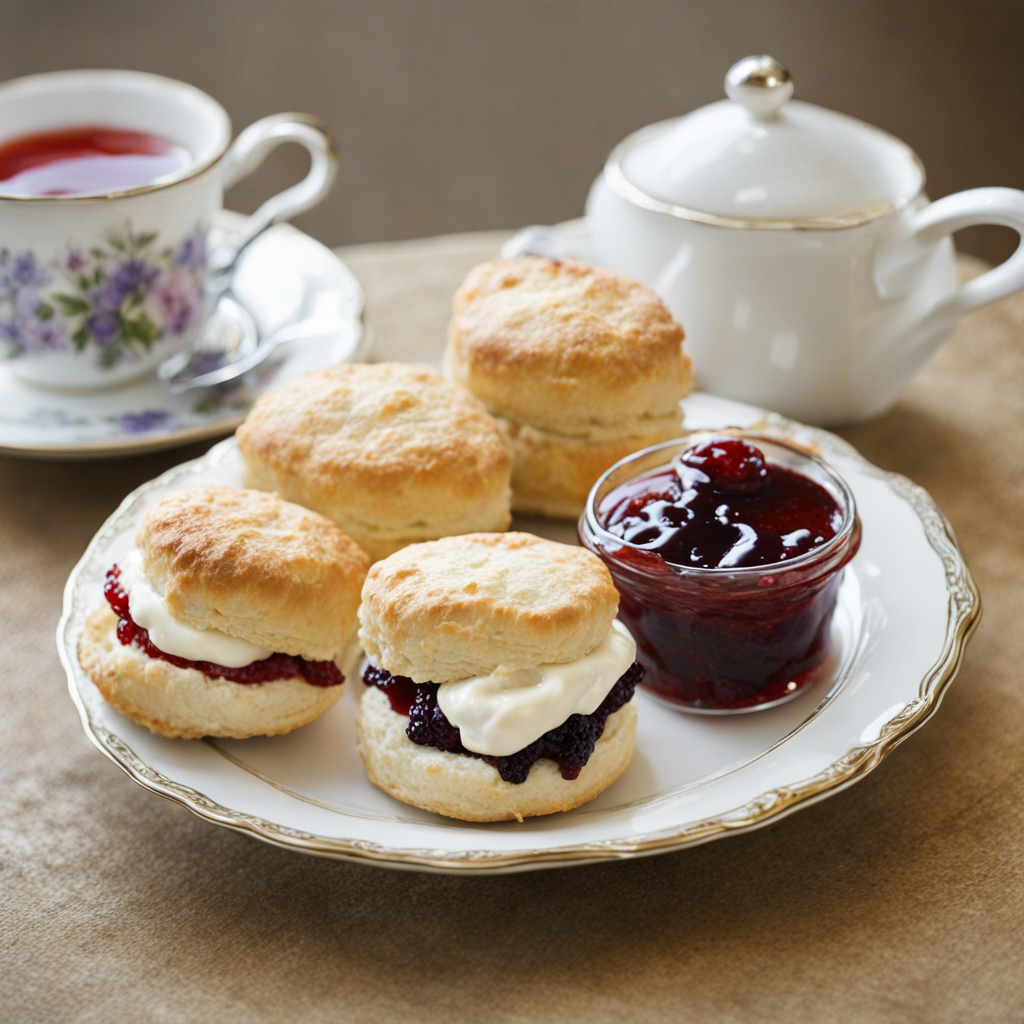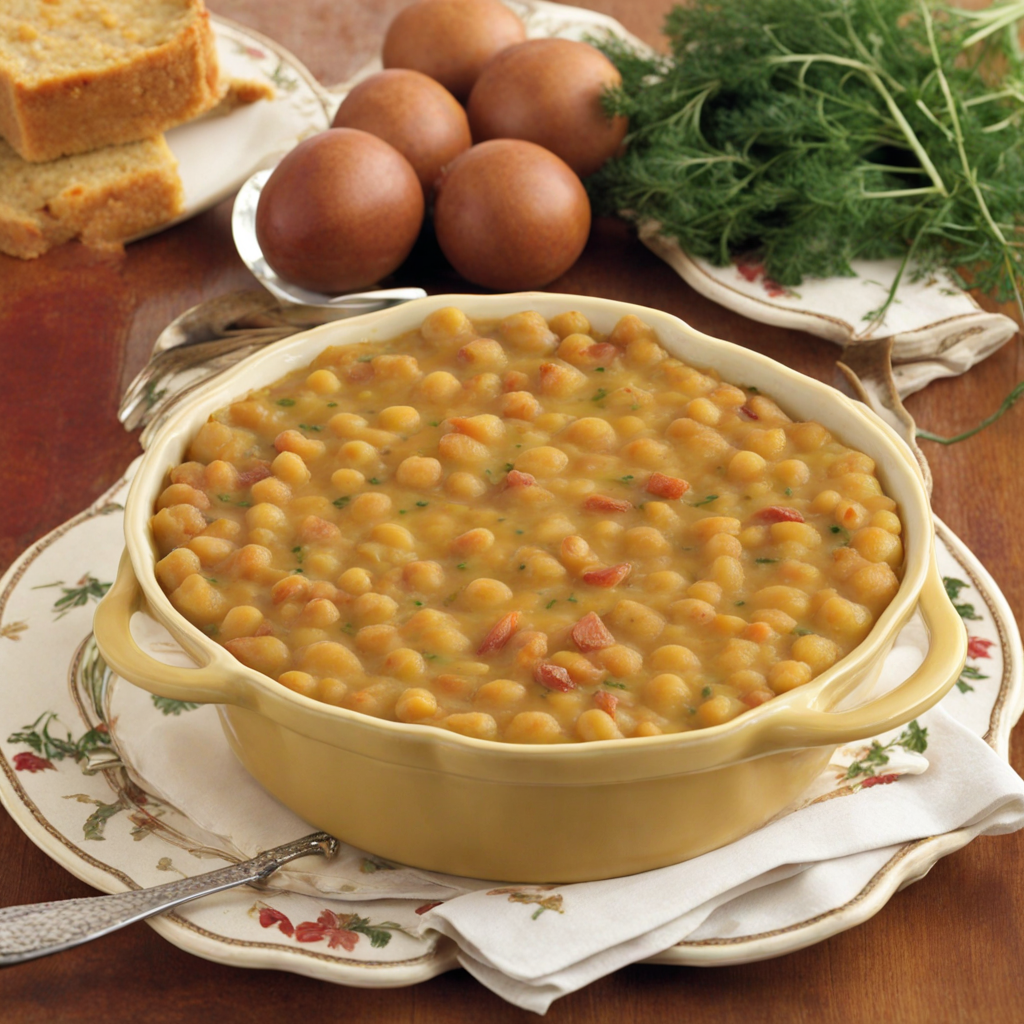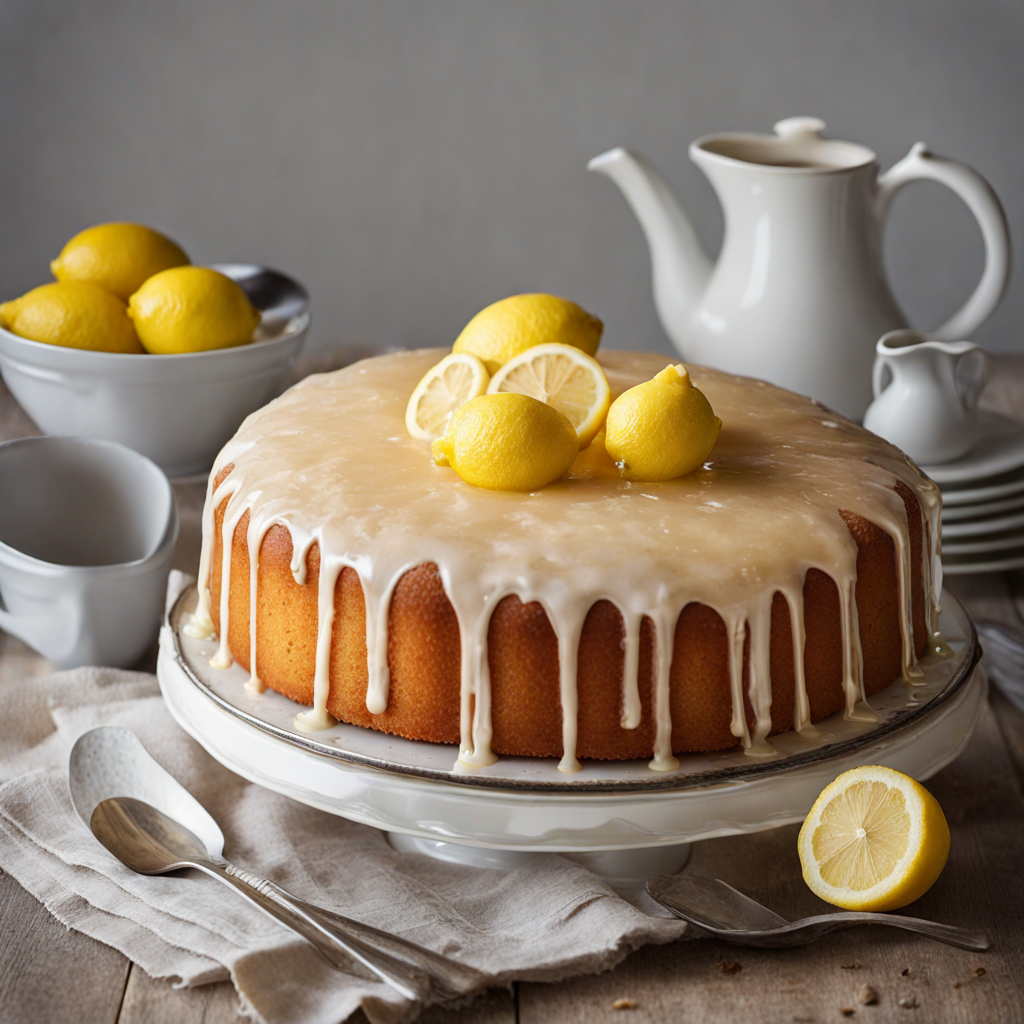Devonshire Cream Tea
Devonshire Cream Tea is a delightful culinary experience that hails from the picturesque Devon region in the United Kingdom. This traditional afternoon tea is characterized by its sumptuous scones, freshly baked to a golden perfection. These scones, soft and slightly crumbly, are typically served warm and are the perfect canvas for the rich accompaniments that follow. The ritual of enjoying Devonshire Cream Tea centers around the enjoyment of these scones, which are often split in half and generously slathered with clotted cream – a thick, creamy dairy product with a velvety texture that elevates the taste to a whole new level. To complement the scones, a selection of homemade fruit preserves, particularly strawberry or raspberry jam, adds a burst of sweetness. The contrast between the rich clotted cream and the tartness of the jam creates a harmonious balance that is truly satisfying. The experience is further enhanced by a steaming pot of freshly brewed tea, often a robust black tea, which serves as the perfect beverage to wash down the rich flavors of the cream and scones. The art of making a Devonshire Cream Tea lies in the balance of these elements, each component playing an essential role in the overall indulgence. Beyond its luscious taste, Devonshire Cream Tea is steeped in tradition and often enjoyed in quaint tearooms with scenic views of the Devon countryside. This culinary delight invites you to slow down and savor the moment, making it a cherished social activity among friends and family. Whether you’re enjoying it as a midday treat or an afternoon indulgence, Devonshire Cream Tea promises a memorable experience that encapsulates the warmth and hospitality of British culture, inviting you to explore the rich flavors and textures that this delightful dish has to offer.
How It Became This Dish
The History of Devonshire Cream Tea Devonshire Cream Tea is not merely a culinary delight; it embodies a rich tapestry of British history, culture, and tradition. With its roots deeply embedded in the English countryside, particularly in Devon, this classic afternoon treat has evolved over centuries, becoming a symbol of leisurely dining and social gatherings. #### Origins The origins of Devonshire Cream Tea can be traced back to the early 11th century. The practice of consuming tea in the afternoon did not emerge until the early 19th century, attributed largely to Anna Maria Russell, the Duchess of Bedford. The Duchess found herself feeling peckish in the long stretch between lunch and dinner, so she began inviting friends to her rooms for tea and light snacks. This concept of afternoon tea quickly gained popularity among the British aristocracy and eventually trickled down to the general populace. However, the specifics of the Devonshire Cream Tea—comprising scones, clotted cream, and strawberry jam—are more localized. Clotted cream, a thick, creamy dairy product, is believed to have originated in the Southwest of England, particularly in Cornwall and Devon, where dairy farming flourished. The region’s unique climate, characterized by lush pastureland and abundant sunshine, allowed for high-quality milk production, which was transformed into clotted cream through a slow cooking process. The earliest known reference to "cream tea" appears in printed literature in the 11th century; however, the combination of scones, cream, and jam likely developed over several centuries. By the late 19th century, the cream tea had become a popular social event in Devon, especially during the summer months when locals and tourists alike flocked to the picturesque countryside. #### Cultural Significance Devonshire Cream Tea transcends mere sustenance; it is a cultural experience that reflects the values of hospitality and community. In Devon, enjoying a cream tea is often seen as a rite of passage for visitors. The experience is not limited to the food itself but extends to the environment in which it is consumed. Many tea rooms and cafes in Devon are housed in quaint, historic buildings and offer stunning views of the countryside, enhancing the overall experience. The distinction between Devonshire and Cornish cream tea is a topic of spirited debate among locals. The traditional Devonshire method involves spreading clotted cream atop the scone before adding jam, while the Cornish style reverses this order, placing jam first. This rivalry, while lighthearted, underscores the pride that both regions take in their culinary heritage. The cultural significance of Devonshire Cream Tea has also been recognized on a broader scale. In 2010, the UK government granted protected status to the term "Devon Cream" and "Cornish Clotted Cream," ensuring that only dairy products made in these regions could be marketed under these names. This move highlighted the importance of regional food identities and the need to preserve traditional practices. #### Development Over Time The evolution of Devonshire Cream Tea is reflective of broader culinary trends and societal changes in the UK. In the early 20th century, the introduction of mass-produced ingredients led to variations in how cream tea was enjoyed. Scones became more widely available, and recipes proliferated, allowing families to create their own versions at home. The convenience of shop-bought clotted cream further democratized the experience, making it accessible to those who might not have had the means or skills to prepare it from scratch. The post-World War II era witnessed a renewed interest in home cooking and local ingredients, spurred by the rise of the slow food movement. As people began to appreciate the value of traditional food practices, Devonshire Cream Tea experienced a renaissance. Tea rooms sprang up across the countryside, often run by families who sought to preserve their local culinary heritage while providing a welcoming space for visitors. In the late 20th and early 21st centuries, the rise of social media and food tourism transformed how Devonshire Cream Tea is perceived and marketed. Platforms like Instagram and Facebook have allowed tea rooms and cafes to showcase their offerings, attracting a younger demographic eager to experience this quintessentially British tradition. The picturesque presentation of scones stacked high with clotted cream and jam has become an Instagrammable moment, contributing to its resurgence in popularity. Moreover, the globalization of food culture has led to innovative twists on the classic cream tea. Contemporary versions may include alternative flavors like lavender or chocolate, and vegan adaptations have emerged in response to changing dietary preferences. While these modern interpretations may diverge from tradition, they demonstrate the adaptability and enduring appeal of Devonshire Cream Tea. #### Conclusion Devonshire Cream Tea stands as a testament to the rich culinary history of the United Kingdom, encapsulating centuries of tradition, regional pride, and social connection. From its humble beginnings as a simple afternoon respite to its status as a beloved national treasure, the cream tea continues to evolve while remaining deeply rooted in its past. As you savor a Devonshire Cream Tea today—whether in a charming tea room overlooking the rolling hills of Devon or in the comfort of your home—you partake in a tradition that has brought people together for generations. It is a delicious reminder of the importance of community, the joys of hospitality, and the simple pleasure of sharing food with loved ones. Whether you spread your jam or cream first, the experience is undeniably rich, in flavor and in history.
You may like
Discover local flavors from United Kingdom







